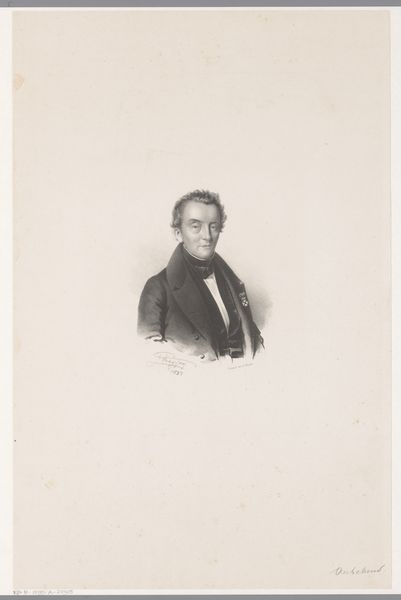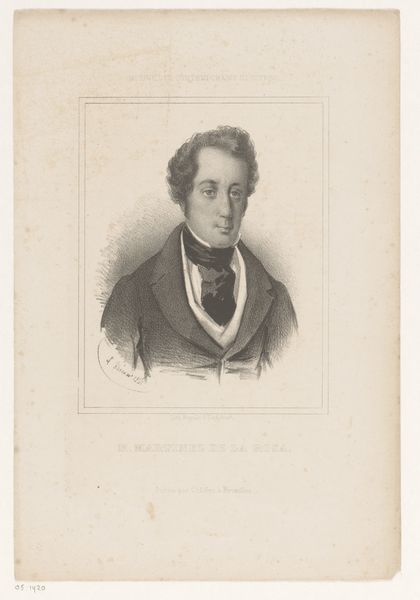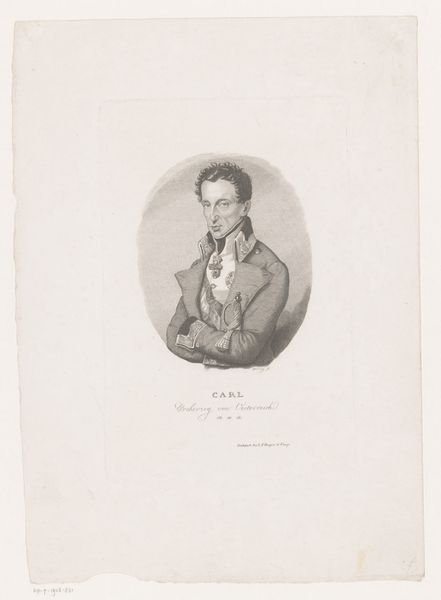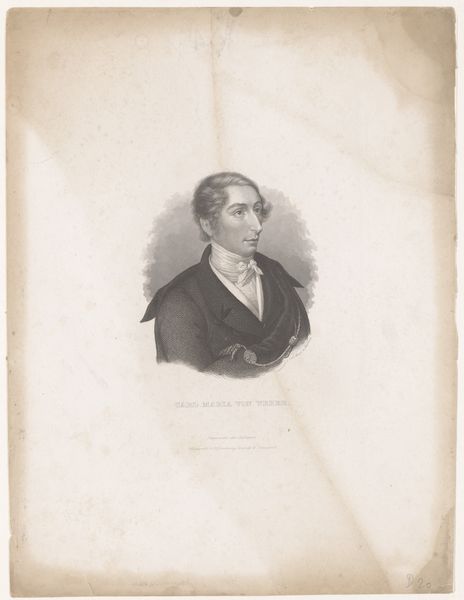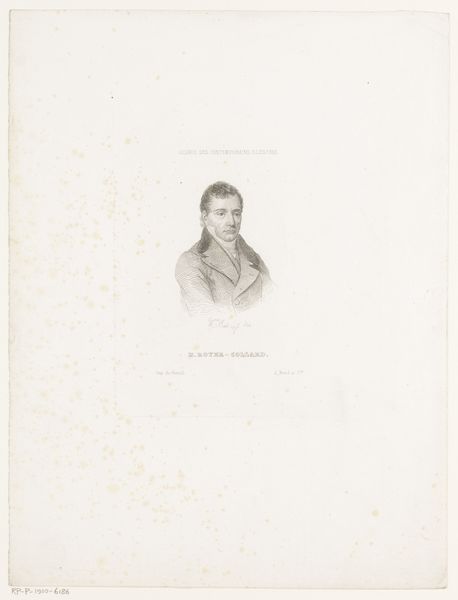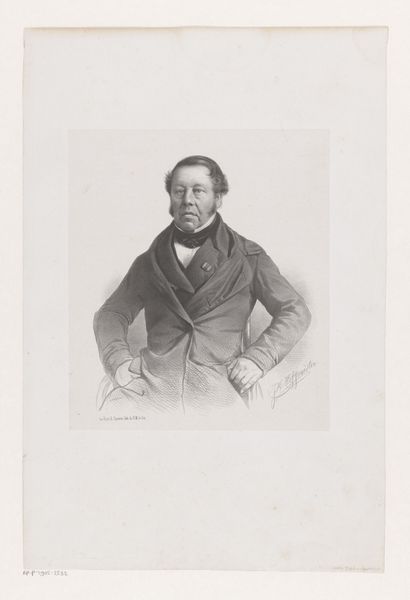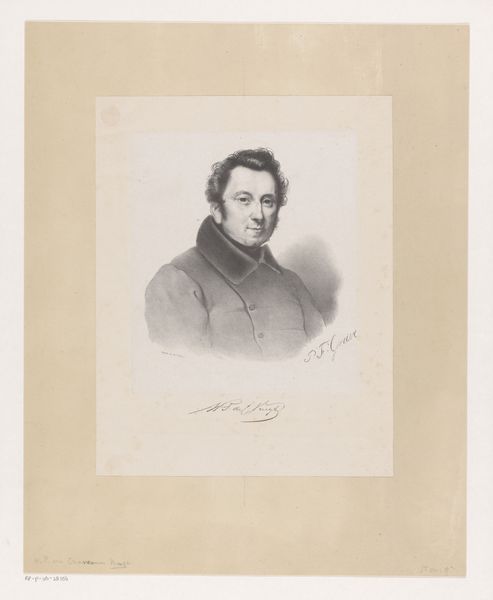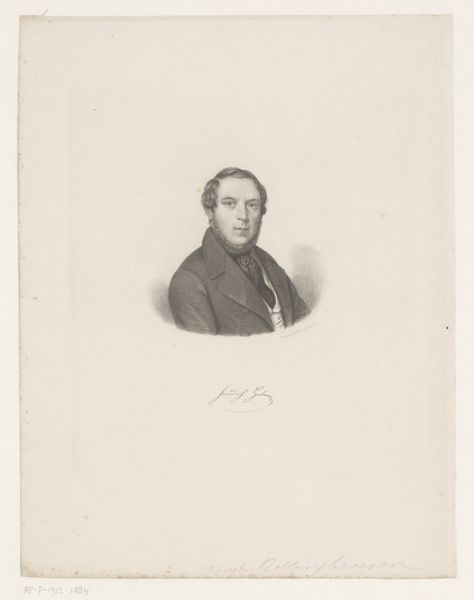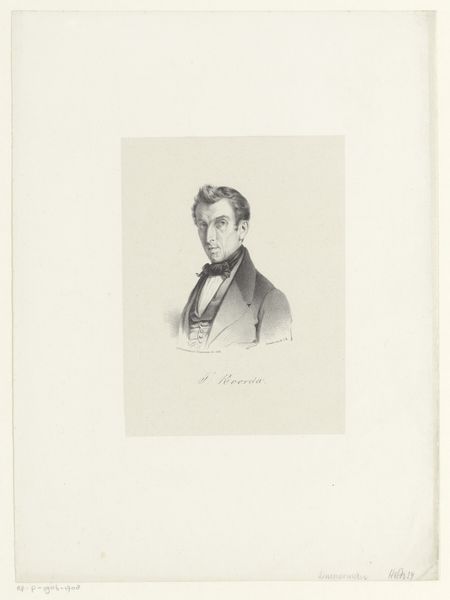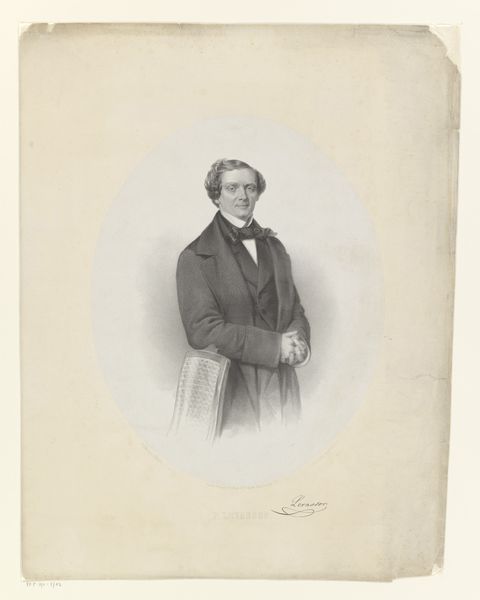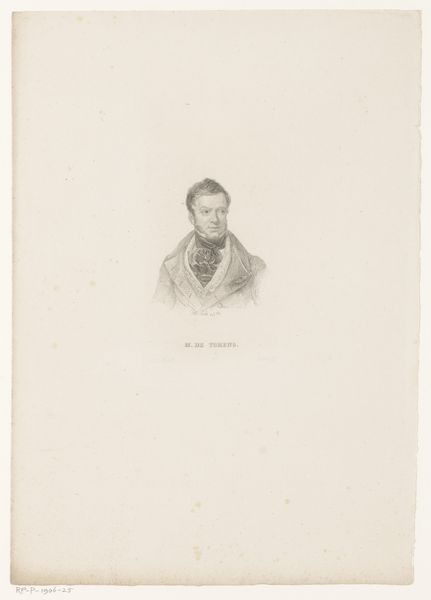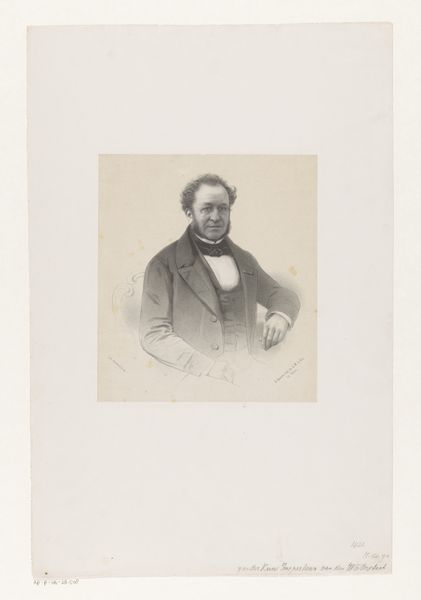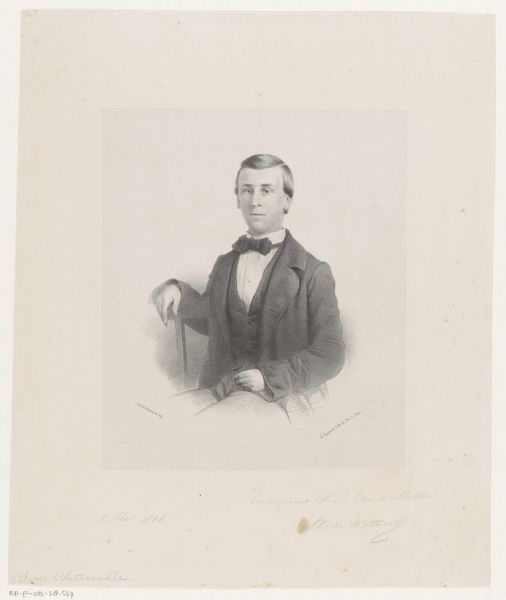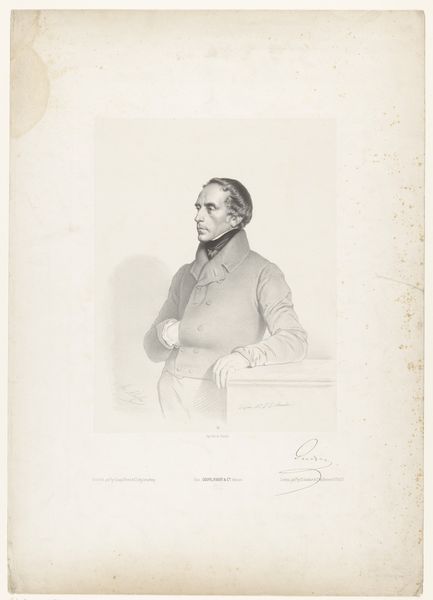
drawing, print, engraving
#
portrait
#
pencil drawn
#
drawing
#
neoclacissism
# print
#
pencil drawing
#
portrait drawing
#
engraving
Dimensions: height 241 mm, width 154 mm
Copyright: Rijks Museum: Open Domain
Curator: This is "Portret van Louis Crespel-Dellisse," an engraving by A. Bosselman, created sometime between 1825 and 1841. Editor: It's striking how formal and serious he appears. The shading really emphasizes the texture of his clothing. I'm curious, is it printed or perhaps hand-drawn? Curator: It’s an engraving, a printmaking technique. Look closely, and you can see how the image is rendered through delicate lines etched into a plate. The quality of paper used certainly impacts the tonal range achieved in the printing process. Editor: The neatness of the portrait gives such an air of status and power. You said it was made between 1825 and 1841. I wonder, how would an image like this circulate and what sort of impression did it leave in its period? Curator: Portrait engravings, like this one, would have circulated among a specific segment of society, shaping and reinforcing social hierarchies. Engravings also facilitated the distribution of images, which played a significant role in cultivating a shared visual culture, allowing for ideas to spread. Editor: Right, it would probably reflect a kind of social ambition, perhaps. Considering Bosselman's labor in the engraving—it feels like such a carefully crafted item; not just about recording a likeness, but almost celebrating an ideal. I’d bet a copy like this was relatively affordable, given the reproduction process. Curator: It highlights a shift in artistic production and consumption during the time. Artists had to adjust their work according to prevailing taste. It’s quite compelling how the mechanical nature of the printmaking process allows the subject of the portrait, in this case, to have a kind of prolonged existence. Editor: Indeed, there’s so much wrapped into even a seemingly simple portrait like this—social standing, distribution of wealth, technological change. Curator: And, of course, materiality, revealing stories far beyond just the subject's likeness. Editor: Looking at this again now I’m less convinced it represents this sitter, as much as how that sitter wished to be perceived.
Comments
No comments
Be the first to comment and join the conversation on the ultimate creative platform.
